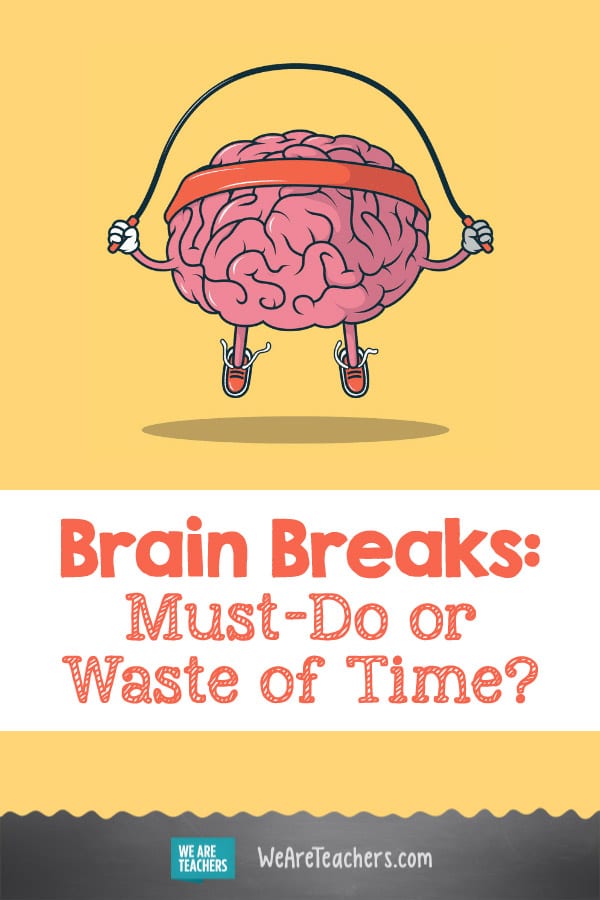In a first grade classroom, students stand up, leaving math work on the floor, and start dancing to a GoNoodle video. In fifth grade, students slide bookmarks into chapter books and look up. “Look around and find something red,” the teacher prompts. “Now find something blue.”
Both of these are brain breaks, quick (five minutes max) nonacademic breaks that are supposed to help students get ready to learn or refocus on the task at hand. On one hand, we know that an idle brain is not an inactive one. In fact, when students are not focused on a task, their brains are busy processing information and making connections. On the other hand, there have also been pushes for more time for academics, especially in lower-performing schools.
Is spending three to five minutes multiple times a day on GoNoodle dances, stretches, and movement breaks an important part of learning or an unnecessary distraction?
The Bottom Line: Brain Breaks Do Work

Image from: https://blog.edmentum.com
There is research to support the use of brain breaks. Physical brain breaks during class time resulted in better behavior and students’ time on task. Brain breaks support children’s reading comprehension and creative thinking. And, there are the times that you see the difference for yourself (and you may need a brain break too).
[contextly_auto_sidebar]
So, brain breaks are something that you should at least try. Here’s how to do them:
Consider Your Students’ Age

Image from: https://shop.pinkoatmeal.com/
Plan brain breaks depending on the age of students you work with. Younger children have less stamina than older students. Kindergarteners may be able to go five to 10 minutes between breaks, while older students may be able to focus for 15 to 30 minutes.
Weave Brain Breaks into Independent Work Time
During independent work time, students’ focus and on-task behavior decreases anywhere from 10 to 30 minutes into a task. So depending on the task and the group, you’ll want to think about brain breaks scheduled every so often.
Teach Brain Breaks
Teach brain breaks like you teach anything else. Don’t dive in on day one. Model the brain break (how to do it, explain why we do it, etc), practice it, give students feedback, and repeat until it becomes like any other routine in your classroom.
Brain Breaks Can Be Academic
You can incorporate academics. For example, after a mini-lesson on counting, have students count how many steps it takes them to get from the rug to their desks. Or, in reading, have students sing along to ABC songs before starting a new activity.
Read the Room

Image from: www.understood.org
Use scheduled activities and unplanned pick-me-ups. If you feel a lesson dragging or notice that students are unfocused, incorporate an impromptu brain break, like a three-minute dance party to a favorite class song, or play a quick game of follow the leader or Simon Says.
Be Flexible
If you set the timer for five minutes, but students are ready to work after one, then stop the break and get to work. The goal is always to refocus students on the work, not to complete the dance or finish a game.
Good Brain Breaks to Start With

Image from: www.edutopia.org
The best brain break for your classroom will be the ones that you all enjoy. Here are some of our favorites that work across grade levels:
Mingle!
Write a few questions on the board and set a timer for one minute. Each time the timer goes off, students choose another partner and a new question. Play for three to five minutes.
Follow the Leader or Simon Says
You know the game, have students mix this one up by taking turns being the leader.
Go Noodle
GoNoodle (subscription) and YouTube videos (like The Learning Station) have movement songs and activities.
Do you use brain breaks in your classroom? Share your experiences in our WeAreTeachers HELPLINE group on Facebook.
Plus, why classroom movement matters.


